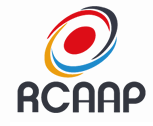Levels of metabolizable energy and digestible lysine for broiler chicks 1-10 days of age
DOI:
https://doi.org/10.5433/1679-0359.2016v37n4Supl1p2691Keywords:
Amino acid, Poultry farming, Energy density, Morphology.Abstract
This study evaluated the effect of different levels of metabolizable energy (ME) and digestible lysine (DL) on the rate of protein deposition, rate deposition body fat and intestinal morphology of broiler chicks 1 to 10 days of age. The study design consisted of 1,152 broilers, weighing 52 ± 5 g, distributed in a completely randomized, 4x4 factorial design, consisting of four levels of ME (2700; 2825; 2950 and 3075 kcal/kg) and four levels of DL (1,080; 1,187; 1,295 and 1,403%), with 16 treatments and three replicates, with 24 poultry in each experimental unit. The protein deposition rate (PDR) and fat deposition rate (FDR) were not affected (P > 0.05) by the ME, however, PDR was influenced linearly (P < 0.05) by increasing lysine. There was an interaction (P < 0.05) between the levels of ME and DL, whose increase resulted in a higher villus height of the duodenum, jejunum and a greater relation villus: crypt ratio of the ileum. Therefore, levels of DL and ME had positive effects on the intestinal development of broiler chicks in the pre-starter phase.Downloads
Downloads
Published
How to Cite
Issue
Section
License
Copyright (c) 2016 Semina: Ciências Agrárias

This work is licensed under a Creative Commons Attribution-NonCommercial 4.0 International License.
Semina: Ciências Agrárias adopts the CC-BY-NC license for its publications, the copyright being held by the author, in cases of republication we recommend that authors indicate first publication in this journal.
This license allows you to copy and redistribute the material in any medium or format, remix, transform and develop the material, as long as it is not for commercial purposes. And due credit must be given to the creator.
The opinions expressed by the authors of the articles are their sole responsibility.
The magazine reserves the right to make normative, orthographic and grammatical changes to the originals in order to maintain the cultured standard of the language and the credibility of the vehicle. However, it will respect the writing style of the authors. Changes, corrections or suggestions of a conceptual nature will be sent to the authors when necessary.


















